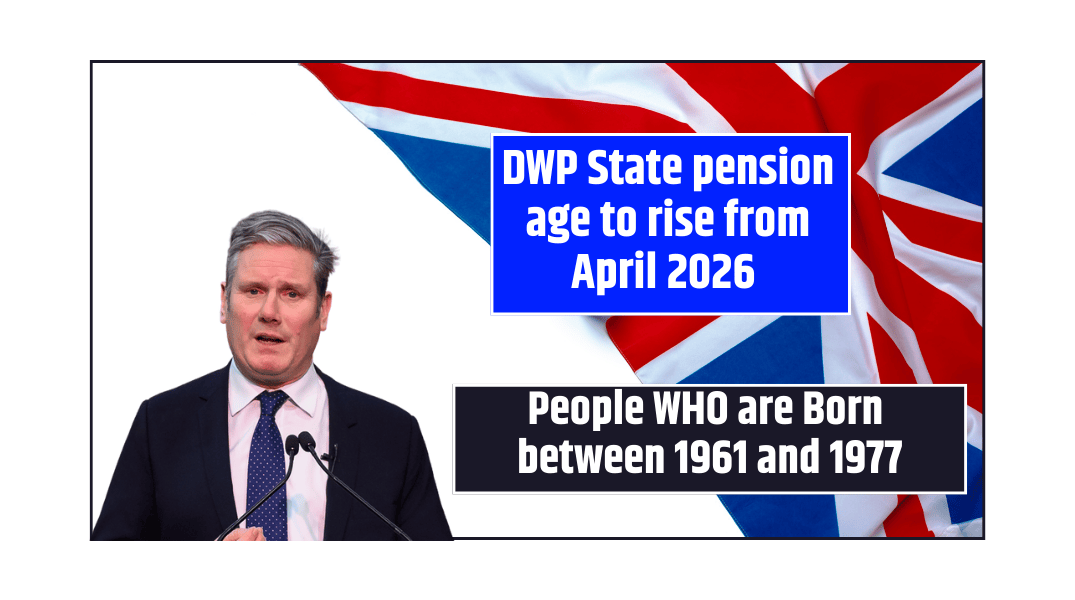The Department for Work and Pensions (DWP) has announced that millions of State Pension and benefit recipients will face a delay in receiving their increased payment rates in 2025. While the new rates take effect from April 7, 2025, most people won’t see the higher amounts in their bank accounts until May 2025.
This delay is primarily because most benefits are paid in arrears, meaning the April increases will reflect in payments made the following month. The change will impact over 12 million pensioners and millions more who rely on other state benefits like Universal Credit, Personal Independence Payment (PIP), and Attendance Allowance.
Let’s break down the details of the increases, who will be affected, and why the delay is happening.
Why the Delay?
Although the official increase date is April 7, 2025, the majority of recipients won’t notice the higher payments immediately. The reason lies in how these payments are structured:
- Most benefits are paid four weeks in arrears, meaning April’s increased rates won’t appear until May 2025.
- State Pension recipients who receive payments weekly or fortnightly will be among the first to see the new amounts.
- Universal Credit claimants may experience the longest delays due to monthly assessment periods that vary for each individual.
How Much Are Payments Increasing?
State Pension Increases (April 2025)
- New State Pension: Increases by 4.1%, rising to £230.25 per week (£11,973 per year).
- Basic State Pension: Increases to £176.45 per week (£9,175 per year).
The 4.1% rise follows the average weekly earnings growth from May to July 2024, as confirmed by Liz Kendall.
Universal Credit Increases (April 2025)
- Single claimant under 25: £316.98 per month (up from £311.68)
- Single claimant over 25: £400.14 per month (up from £397.55)
- Joint claimants (both under 25): £497.55 per month (up from £489.23)
- Joint claimants (one or both over 25): £628.10 per month (up from £617.60)
Personal Independence Payment (PIP) Increases (April 2025)
- Enhanced Daily Living Component: £110.40 per week (up from £108.55)
- Standard Daily Living Component: £73.90 per week (up from £72.65)
- Enhanced Mobility Component: £77.05 per week (up from £75.75)
- Standard Mobility Component: £29.35 per week (up from £28.70)
Attendance Allowance Increases (April 2025)
- Higher Rate: £110.40 per week (up from £108.55)
- Lower Rate: £73.90 per week (up from £72.65)
Pension Credit Minimum Guarantee (April 2025)
- Single claimants: £227.10 per week (up from £218.15)
- Couples: £346.60 per week (up from £332.95)
Scottish Devolved Benefits (April 2025)
Scottish benefits will also rise by 1.7% in line with September 2024’s CPI rate. This applies to:
- Adult Disability Payment (ADP)
- Child Disability Payment (CDP)
- Pension Age Disability Payment (PADP)
Other Payment Changes You Should Know
- Local Housing Allowance (LHA):
- The LHA rates for 2025/26 will remain at their 2024/25 levels.
- The rates were last increased in April 2024 to reflect current rental costs.
- Benefit Cap:
- The benefit cap will remain unchanged for 2025/26, with no review planned.
- Current caps are:
- £23,000 per year for families in London.
- £20,000 per year for families outside London.
Who Will See the New Payments First?
- Weekly or fortnightly State Pension recipients will notice the increase earliest—likely by the second half of April 2025.
- Monthly benefit recipients, such as those on Universal Credit, might not see any change until mid-to-late May 2025.
- Scottish benefit recipients will experience similar timelines, as most Scottish benefits are also paid in arrears.
Why Are Some Benefits Increasing More Than Others?
The State Pension’s 4.1% increase follows the triple lock formula, which guarantees pensions rise by the highest of:
- Average earnings growth (4.1% in 2024)
- Consumer Prices Index (CPI) inflation (6.7% in September 2023)
- 2.5% minimum guarantee
Meanwhile, other working-age benefits like Universal Credit and PIP are linked to September 2024’s CPI inflation, projected at 1.7%.
While the DWP’s 2025 payment increases will provide a financial boost to millions of pensioners and benefit claimants, most recipients will need to wait until May 2025 to see the higher amounts due to the four-week arrears payment system.
Make sure to check your payment dates and stay informed about your assessment periods if you claim Universal Credit or other benefits with monthly variations.
| Visit for More News and Updates | WSOA NEWS |
FAQ’s
Why is there a delay in the 2025 benefit payment increases?
The delay is due to most benefits being paid four weeks in arrears, meaning April’s increases will not appear in payments until May 2025.
When will I receive my increased State Pension?
If you receive your State Pension weekly or fortnightly, you may see the increased amount in April 2025. Monthly payments will likely reflect the increase from May 2025.
How much will the State Pension increase in 2025?
The new State Pension will rise by 4.1% to £230.25 per week, while the basic State Pension will increase to £176.45 per week.
How much will Universal Credit increase in 2025?
Universal Credit will rise by 1.7%. For instance, single claimants over 25 will receive £400.14 per month, while joint claimants over 25 will get £628.10.
Will Scottish benefits also increase in 2025?
Yes. Scottish devolved benefits like the Adult Disability Payment and Child Disability Payment will also increase by 1.7% in April 2025.
What is happening with the benefit cap in 2025?
The DWP has confirmed that the benefit cap will remain unchanged at 2024/25 levels, with no review planned for 2025/26.
Will Local Housing Allowance rates change in 2025?
No. Local Housing Allowance rates will stay the same in 2025/26, following the increase implemented in April 2024.














